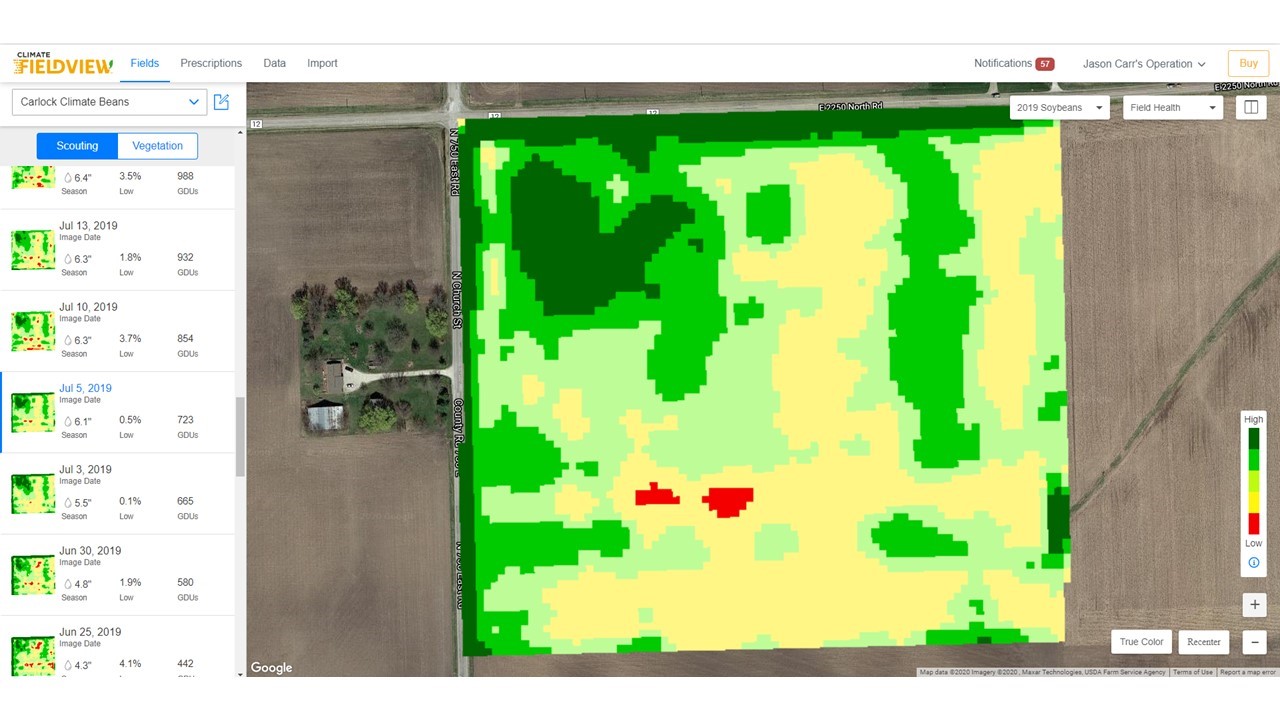There are many digital ag platforms available to today’s farmers. These powerful tools allow growers to easily summarize and analyze their results from past growing seasons. However, if you are only using your digital platform to look at yield data, you are missing out on an opportunity to improve your operation in numerous ways. Here are five ways you can improve your return on investment with digital agriculture.
Optimize your inputs
One way some digital ag tools create value is by allowing growers to create variable planting rate prescriptions. These prescriptions can be automatically generated and use prior years’ yield data and field imagery to alter planted population based on the productivity of the field region. This feature can pay for itself in the form of reduced seed cost and/or higher yield. If your planter has multi-variety capability, you can also use prescriptive technology to create a prescription based on disease resistance in your varieties and disease-prone regions of the field. For example, a Phytophthora-resistant variety can be planted in lower areas of the field and a higher-yielding variety without resistance could go on the high ground.
Many digital tools also allow growers to monitor and modify their fertilizer applications. Variable fertilizer rates can be applied based on soil sampling data, weather throughout the season, or other parameters. This provides clear benefits to farmers in the form of lower input costs and reduced nutrient loss.
Conduct your own on-farm research trials
Are you interested in validating company claims about a seed treatment or new fungicide? Do you want to see how seeding rate and soil type interact in your operation? Do you just want to conduct a variety performance plot on your own farm? It has never been easier to conduct your own on-farm research. With a little planning up-front, growers can evaluate these and other parameters with little more extra work than entering hybrid or treatments from the tractor cab and capturing spatial yield data at harvest. When conducting your own on-farm trials, be sure to replicate (plant multiple strips of each treatment) and randomize (don’t plant all treatments in the same order across replications) wherever possible.
Monitor potential in-season problem areas
If your farm management software provides regular satellite imagery of your fields, this information can be used to prioritize crop scouting. Frequent monitoring of imagery allows for early detection of potential problems, while they can hopefully still be corrected. These images can not only help to identify which fields may have a potential problem, but also allow for concentration of scouting efforts on specific field regions.

Improve communication
When scouting, take advantage of features which allow you to drop pins and link notes and photographs to specific regions within fields. Consistent note-taking can provide a record of situations as they develop and can later be used to help understand differences in field maps, even in subsequent years. This information can also be shared with others inside and outside of your operation. Utilize these features to share information with crop scouts, agronomists or other trusted advisors. A series of pictures can often help an advisor better diagnose a problem when they may not be able to physically visit a field.
Plan off-season activities
In-season satellite imagery, as well as yield maps, can be used to prioritize post-season field activities. For instance, they can be valuable in developing a tile installation plan for fields. Sharing these images with your tiling contractor can help them to determine which regions of your field are higher priorities for improved drainage. Sometimes these images can be more useful than soil and elevation maps, as several factors are involved in the occurrence of field wet spots. These problem areas are generally readily apparent in aerial or satellite imagery and usuallly show up in yield maps.
There are many ways that digital ag tools can be used to improve farm profitability. There are a good number of options available, and many of them have most or all of the features outlined above. If you are not currently using these tools, evaluate the possibilities and see if a digital platform has a place in your operation. If you are currently using one, be sure that it has all of the features that you desire. With all of the competition in this marketplace, there is no reason to settle for a platform that does not fulfill your needs.


 and then
and then